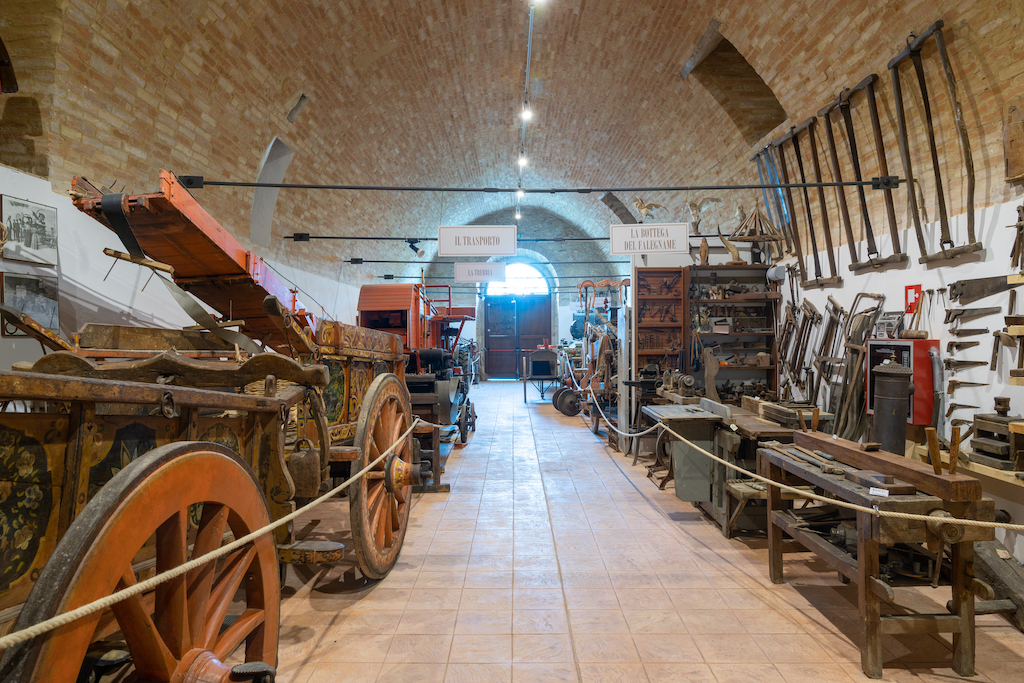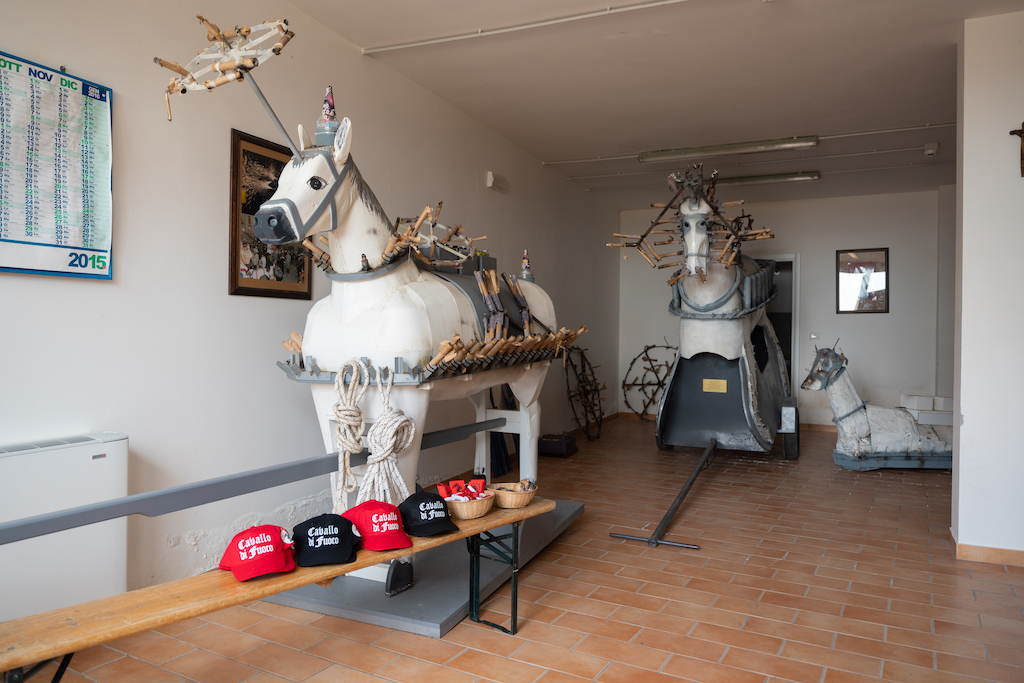The Museum of Peasant and Artisan Civilization of the Middle Piceno documents the rural tradition of the City of Ripatransone and evidence of life in the fields and the role of artisan workshops in relation to agricultural activity.
The museum collection dates back to 1990 thanks to private donations. It was first located in the premises below the Ildebrando Malavolta School, and then moved in 2014 to its current location, the Former Cardarelli Wine Cellars, on an area of 502 square meters.
The layout criteria established by the more than 60 members of the Museum aim at the exaltation of tradition, in a chronological sequence from ancient to modern aimed at showing how evolution and progress have affected the habits of the inhabitants of Ripatransone.
The itinerary is divided into 4 main sections - EARTH WATER WINE BREAD - and several subcategories, in an attempt to giving voice to past inhabitants, with their basic needs, and taking into account the social and cultural aspects of a civilization.
Land & Water
A series of clay artifacts made in the tome by potters, the so-called "Cuccia," shows the types of pottery found in all farmhouses at the time, in their territorial specificity and for different uses.
Wine
A display of the tools used to process grapes, from the wagon used to transport freshly harvested grapes in the vineyards to the crusher, shows the various stages of wine preparation up to its arrival in the barrels. Also on display are the various tools that were used for the subsequent stages of storing, bottling, racking, transporting and weighing, up to a rare separator machine, to separate grape seeds from grape marc for the extraction of the prized grape-seed oil.
Bread
A snapshot of work in the fields, necessary to bring the main food, bread, to the table. Several plows show the evolution of agricultural techniques alongside other tools for grain processing, such as ancient millstones, mietitrebbia o setacci di varie dimensioni.
The farmhouse
At the heart of the museum, a leap into the past is offered with entry into a faithful reproduction of a farmhouse.
The main rooms-the kitchen, the bedroom, the barn, and the storeroom-are recreated in such a way as to give the visitor the impression of being in a real lived-in place, with everyday objects such as beater, coffee pots, and pots, as well as mousetraps, grain roasters, and pasta-making guitars, arranged as if the environment were still lived in by the women and men who work every day on the sustenance of the home.
The journey into the past invariably continues as we enter the ARTISANS' WORKSHOPS. Tailor, shoemaker, blacksmith, carpenter are just some of the trades that were practiced thanks to the fruits of labor in the fields.
One area shows the processing of hemp until it became fabric, thanks to the valuable work done with spindles, archers, and an ancient loom.
Also not to be missed are the MEANS OF TRANSPORTATION, as necessary for work as for the Sunday outing to town. Wagons of various geographic origins and different sizes, colorful yokes for donkeys, and a palace, a means of transporting hay without wheels.
A real SCHOOL is set up with desks and inkwells, abacuses and notebooks.
A final look goes to miniatures, toys, and cloth coloring tools, such as the flaxseed grinder.
The cognitive and sensory experience of the City's tradition can continue once you leave the musco with the discovery of the food and wine specialties of Ripatransone, City of Oil and Wine.
Fire Horse Museum
Home of the silhouettes used over the centuries for the Fire Horse fireworks display.

